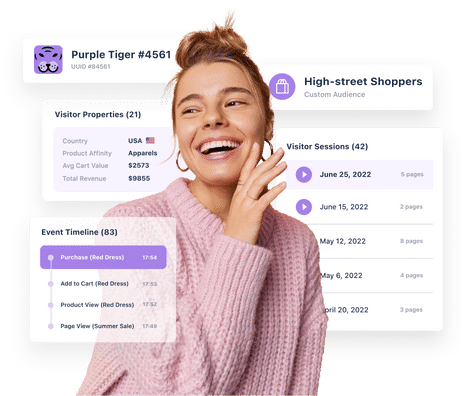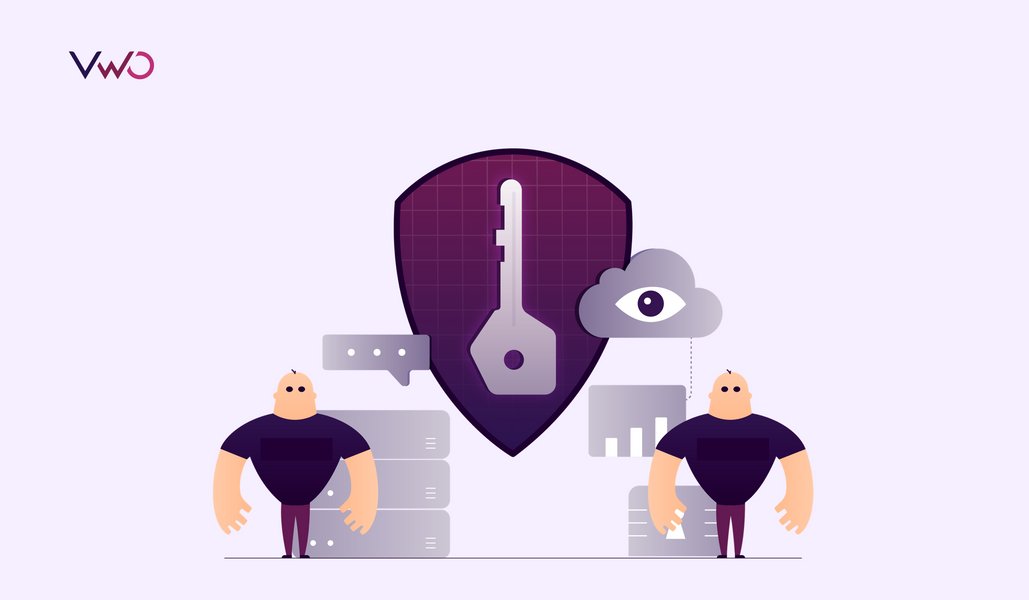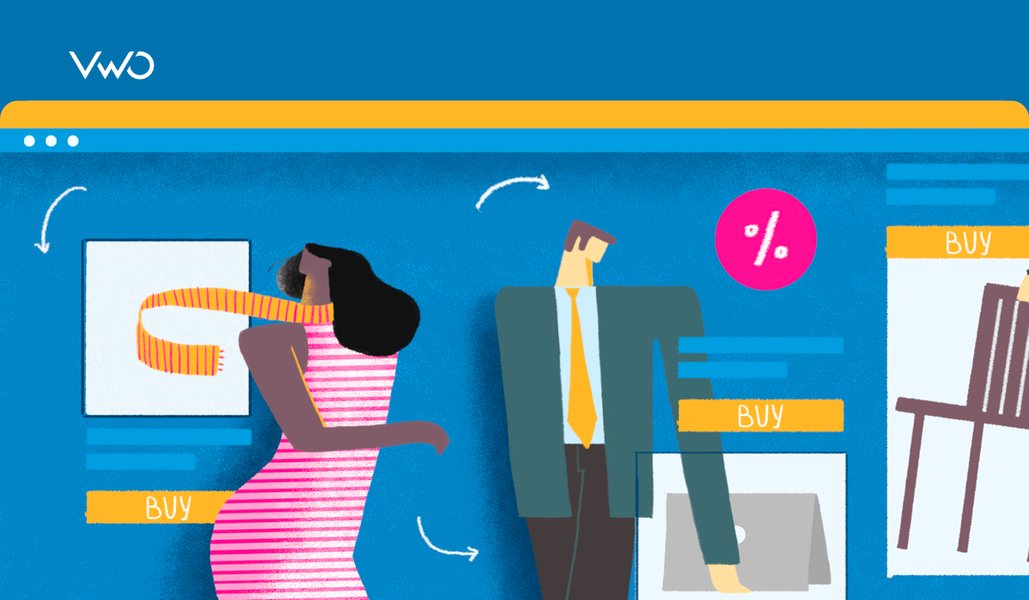Customer Engagement vs. Customer Experience vs. Customer Satisfaction – Meaning, Importance, and Examples
It’s all about the basics.
In a world where competition is intense and customers have it all figured out, it’s easy to focus on what’s trending and achieve short-term success through it.
But, if you look at the bigger picture, gaining trust and building a long-term relationship with your customers is what really matters.
It’s the most basic aspect of any business, yet a lot of brands are struggling to achieve it.
Why?
Because, they fail to focus on the three key pillars of long-term success: customer engagement, customer experience, and customer satisfaction.
Without proper strategies for each of these pillars, you will find it tough to grow your business and build brand loyalty. So, let’s take a closer look at what these aspects entail and how you can ensure long-term growth and success by implementing them.
What is customer engagement? Why is it important?
Just like the name suggests, the concept of customer engagement is all about building a relationship with your customers. It refers to the interactions and experiences a customer has with a brand across various touchpoints.

Customer engagement is a measure of how well your business can capture and maintain a customer’s interest, attention, and involvement over time.
For example, let’s say you manage an e-commerce brand and want to improve customer engagement.
One of the things that you can do is send a personalized email to the customer as soon as they purchase a product. Apart from thanking them for making a purchase, your email can also include helpful information about the product like how it can be used, tips for maintenance, instructions for claiming a warranty, and so on.
Post the purchase, you can follow up with the customer regularly to share updates, exclusive offers, and customer feedback requests while also sharing relevant, helpful content on your social media pages.
By doing so, you are creating a positive customer experience that involves personalized interactions, continuous support, and a sense of community, ensuring that your customer feels valued and supported.
As a result, customers are more likely to stay loyal to your brand, share positive experiences with others, and they will also consider you for their future needs. Moreover, they will also be willing to provide valuable customer feedback and suggestions to improve the business.
In other words, an effective customer engagement strategy involves nurturing relationships, showing genuine care, and providing value beyond the initial sale.
It’s a two-way street that benefits the customer and the business too.
What is customer experience? Why is it important?
Customer experience refers to the overall journey and interaction that a customer has with a brand, product, or service. It covers every touchpoint and interaction a customer has, right from awareness to post-purchase.
While customer engagement & customer experience are similar concepts, they focus on different aspects of the relationship between brands & customers.
Let’s consider the previous example of managing an e-commerce brand.
To increase customer engagement, you sent personalized emails, shared helpful content on social media, and ensured healthy interactions with the customer.
Now, to improve customer experience, you can start by building a user-friendly website experience. Every product on your website will include high-quality images, detailed descriptions, customer reviews, etc.
Additionally, you can ensure that the entire checkout process is simple and hassle-free. Post the purchase, you can also provide prompt customer support, timely order fulfillment, and an easy return/refund process.
By doing so, you are building a holistic experience for the customer that includes improved website usability, high-quality customer support, a smooth checkout process, and post-purchase assistance as well.
In short, customer experience is all about how you make your customers feel across their entire journey with you. A positive customer experience will help you to build a strong, loyal customer base and can improve your brand reputation too.
What is customer satisfaction? Why is it important?
Customer satisfaction refers to the extent to which customers are happy and content with their interactions and experiences, with a product, service, or brand.
It reflects how well a company meets or exceeds customer expectations.
High customer satisfaction indicates that customers are happy with their overall experience, while low customer satisfaction suggests areas of improvement.
Let’s understand customer satisfaction with the same e-commerce brand example. Your customers will feel happy and satisfied when the products they receive match the images and descriptions available on your website.
Another way to improve customer satisfaction is to ensure that the products are delivered on time and the quality of the products also match their expectations.
You can build on this by offering prompt assistance and asking for customer feedback. By doing so, you can focus on meeting and exceeding the expectations of your customers, which is what customer satisfaction is all about.
How are customer engagement, customer experience, and customer satisfaction related?
As we saw before, regular interactions with your customers along with strategies to improve experience, will eventually contribute to high levels of customer satisfaction.
These three pillars – customer engagement, customer experience, and customer satisfaction – complement each other while also helping you build customer loyalty and achieve long-term success.
While these three concepts are quite distinct, they are also interconnected and often influence one another. Let’s have a closer look at how each pillar is related to each other.
Customer engagement vs. customer experience:
As we know, customer engagement is all about having healthy and personalized interactions at every touchpoint. By doing so, you build a connection with the customer which again contributes to building a positive customer experience.
When customers are actively engaged through personalized interactions, relevant content, and meaningful connections, their overall ‘experience’ with the brand becomes more positive and memorable.
Thus, engaged customers will more likely have a better experience because they are actively involved in their interactions with the brand.
When you engage in these interactions across various touch points such as email recommendations, helpful content, and social media interactions, it enhances the customer experience, making it more dynamic and layered.
Customer experience vs. customer satisfaction:
As we noticed in our previous examples of managing an e-commerce brand, creating a positive customer experience plays a huge role in improving customer satisfaction.
When you provide a seamless experience throughout the customer journey with a brand, it eventually leads to higher satisfaction levels, as customers feel their needs and expectations have been met or exceeded.
This creates a positive perception of the brand in the minds of the customers, resulting in improved customer satisfaction.
Customer satisfaction vs. customer engagement:
Customer satisfaction is known to be the foundation for customer engagement.
When customers feel satisfied with your brand, they are more likely to engage with you further, either through more purchases, referrals, or even participating in activities that you organize.
High customer satisfaction also means that customers are more likely to stick with your brand since their positive experiences have laid the groundwork for trust and loyalty.
So, when you successfully engage customers, provide memorable experiences, and ensure their satisfaction, you create a positive cycle that results in increased loyalty, repeat business, positive word-of-mouth, and sustainable long-term growth.
In other words, customer engagement, customer experience, and customer satisfaction are all connected elements that hold the key to the relationship you have with your customers.
Which is more important: customer engagement, customer experience, or customer satisfaction?
If your goal is to build a successful, customer-centric business while also achieving loyalty and long-term growth, you need all three – customer engagement, customer experience, and customer satisfaction.
This is because these three pillars are interconnected. They can only deliver results when you implement them together to create a positive and lasting relationship with your customers.
As we know, customer engagement is a crucial component for building a relationship and promoting brand loyalty. When customers feel engaged, they are more likely to interact with you, share their experiences, and provide valuable feedback.
Customer experience, on the other hand, is a ‘must-have’ at every touchpoint. It ensures that every aspect of the customer journey is designed to provide a positive experience.
Without this, you will find it challenging to engage customers effectively.
Thus, customer experience is considered to be the foundation upon which both customer engagement and customer satisfaction are built.
Customer satisfaction reflects how well your brand meets or exceeds customer expectations. High customer satisfaction leads to customer loyalty, positive word-of-mouth, and repeat business.
So, rather than trying to figure out what’s more important, you should develop a culture where these elements work together to provide customers with high levels of satisfaction, memorable experiences, and genuine engagement.
Examples of good customer engagement, customer experience, and customer satisfaction
Having a balanced approach toward each of these ideas is crucial for the long-term growth and success of any company. Let’s have a look at some real-life examples of brands that have successfully incorporated each of them.
Customer engagement example
UK Tool Centre, an e-commerce platform that offers a huge range of over 42,000 products, wanted to improve engagement on one of its product pages.
The page offered a brand of woodcare products called Cuprinol and had a filter menu right at the top. It was theorized that this filter menu was distracting users from exploring the products.
So, the company ran a test where they compared the original product page (control) with another version of the page (variation).
In the original version of the page, the filter menu was placed just above the Cuprinol listing.
In the variation, the filter menu was completely removed from the page, making it easier for the users to explore all the products.
Once the test was conducted, the variation saw a 27% increase in engagement on the product page.
This was possible because the company identified the needs of its customers and removed distractions from the page. Users were now able to have a better look at the products, which again increased engagement on the page.
Through this simple customer engagement strategy, UK Tool Centre was able to encourage healthy interactions with its audience.
Customer experience example
Buyakilt.com, an online Kilt and Scottish Highland Dress retailer, had multiple category pages along with many more subcategory pages.
The company wanted to test whether a new product filter would make it easier for customers to find what they were looking for.
With the help of VWO, they ran a test to confirm whether this change would improve customer experience, and in turn, increase conversions.
The new variation included a product filter, which allowed users to shop by kilt type, kilt pattern, and so on.
After the test was completed, Buyakilt.com registered a whopping 76.1% increase in revenue. Moreover, they also saw a 26% increase in conversions along with a 19.76% increase in shopping cart visits.
One of the main reasons for this success was that a simple feature offered an easier way to take action, thus improving the overall customer experience.
Customer satisfaction example
Archive Social is a US-based brand that helps organizations fulfill their legal requirements and avoid lawsuits on social media.
The company wanted to improve lead generation through its pricing page and also increase conversions from a banner form on its home page.
Working with the VWO team, Archive Social made some observations about areas that needed improvement. These areas were affecting conversions and were also preventing the company from satisfying customer expectations.
To begin with, they noticed that the email form field was shown at the very button of their home page banner. This made it difficult for users to differentiate the field from the rest of the page.
They ran a test with a new variation where the email field had better placement and visibility. After running the campaign for 27 days, the variation saw a massive increase of 101.68% in terms of clicks on the email field.
Next, Archive Social ran a test on their pricing page. Here, the variation included a completely revamped page where the primary CTA button was highlighted and the pricing options & features displayed were extremely simple.
After running the test for seven weeks, the variation saw a huge jump of 64.76% in conversions and visits to the ‘Thank you’ page.
In their final campaign, the company wanted to increase traffic to the gated content on their ‘Resources’ page. To do so, they created a new variation by adding the ‘Resources’ category to the top navigation bar.
They ran this campaign for 10 days and registered a 73.30% uplift in traffic for the new variation. Thus, Archive Social understood the needs of their audience and the results clearly show that they also satisfied customer expectations.
The above examples prove that no matter the industry, you can always achieve long-term growth by focusing on three basic aspects of any successful business – customer engagement, customer experience, and customer satisfaction.
Frequently Asked Questions (FAQs):
No, customer engagement and customer experience are interconnected but distinct concepts.
Customer engagement focuses on actively involving customers through interactions, communication, and relationship-building efforts.
On the other hand, customer experience deals with the entire customer journey, covering all touchpoints, right from discovery to purchase and post-purchase interactions.
No, customer engagement and customer experience are interconnected but distinct concepts.
Customer engagement focuses on actively involving customers through interactions, communication, and relationship-building efforts.
On the other hand, customer experience deals with the entire customer journey, covering all touchpoints, right from discovery to purchase and post-purchase interactions.
Yes, there’s a strong relationship between engagement and customer satisfaction. Engaged customers, who actively participate and connect with a brand, often have higher levels of satisfaction.
When customers feel connected, valued, and involved, their overall experience is enhanced, leading to greater contentment and positive perceptions.
In turn, satisfied customers are more likely to engage with the brand, provide positive feedback, and become loyal advocates.
This positive feedback loop between engagement and satisfaction reinforces customer loyalty and business success.
Customer experience refers to the holistic journey a customer has with a brand, encompassing all interactions and touchpoints. It’s about how a customer feels and perceives their interactions throughout their entire journey.
On the other hand, customer satisfaction specifically measures how content customers are with their experiences. It’s a direct reflection of whether a brand meets or exceeds customer expectations.
Both customer engagement and customer satisfaction are crucial for a successful and customer-centric business. They are interconnected elements that work together to create positive relationships and drive growth.
Customer engagement fosters loyalty, encourages repeat business, and generates positive word-of-mouth. Customer satisfaction builds trust, and loyalty, and enhances a brand’s reputation.
Rather than prioritizing one over the other, businesses should aim to strike a balance between the two.


























